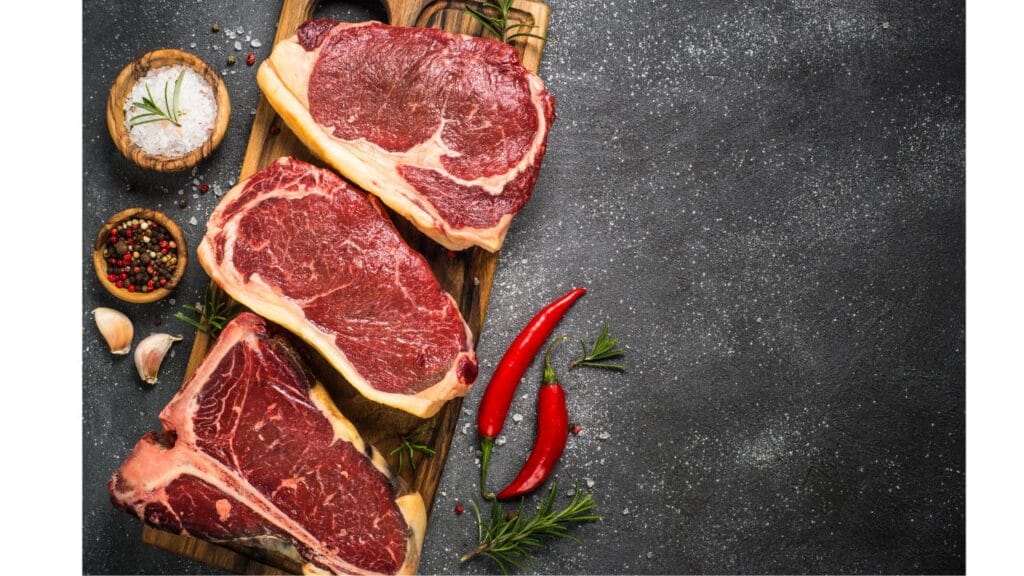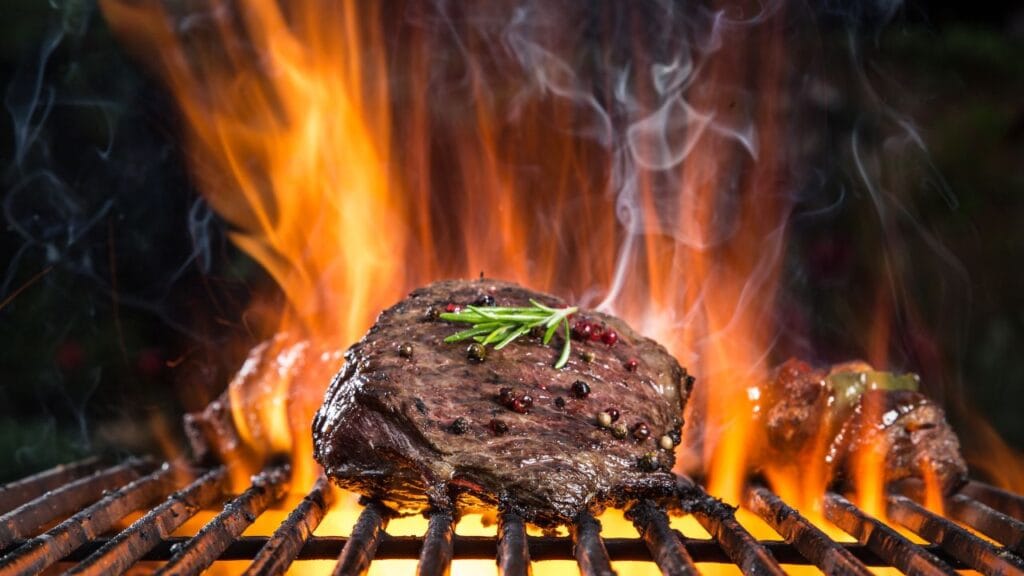Heritage Day is our special occasion to unite and celebrate the vibrant cultures, traditions, and beliefs that make our country truly unique.
Just like biltong, bunny chow, and walkie-talkies, the braai has become a quintessential part of South African life—and rightly so!
Dr. Bob Brain, a leading scientist and excavation expert at the Swartkrans Cave site in the Cradle of Humankind, has uncovered some of the earliest evidence of controlled fire, dating back approximately one million years.
Legend has it that the first braais were a happy accident, occurring when meat accidentally dropped into open flames. It was discovered that not only did this charred meat taste better, but it was also easier to chew.
After a million years of braaing, it’s in our DNA! And while this is a remarkable milestone, our braai culture has evolved significantly over the ages.
To help you perfect your Banting braai, here are the Real Meal Revolution’s top tips: start with quality meat, grab a reliable pair of tongs, ensure your coals are at the perfect temperature, and don’t forget to whip up some delicious Banting side dishes!
When it comes to favourite braai meats, boerewors, chicken, and steak top the list. But steak can be a bit confusing, so let’s break it down!
Some cuts of steak:

Let’s break down some of the top cuts of steak for your braai:
Sirloin: Cut from the upper middle of the cow, this steak is tender and well-marbled with fat, thanks to its relatively low activity level compared to other areas.
Fillet: Sourced from the underside of the sirloin, the fillet is often considered the crème de la crème of steaks. It’s the leanest and most tender cut, making it a favourite among steak lovers.
Rump: While not as tender as the fillet or sirloin, the rump steak is celebrated for its robust flavour, making it a delicious choice for those who appreciate a meaty taste.
Rib Eye: Taken from the rib section of the cow, the rib eye steak is known for its tenderness and rich flavour. It has pockets of fat that require a bit more cooking and resting time than other cuts, but the result is well worth it.
What makes a good steak?
Choosing the perfect steak involves more than just picking a cut—there are key factors to consider for maximum flavour and tenderness:
Age Matters: If your steak is bright red, it likely hasn’t had time to age. Look for a deep maroon or even a purple hue—this is where all the flavour lies! The longer the meat has aged, the more tender it becomes.
Fat Layering: Just as meat changes colour with age, so does the fat surrounding it. A creamy to yellow fat indicates flavour-packed goodness. Grass-fed steak tends to have yellow fat due to carotenoids, contributing to its nutrient density. This fat not only flavours the meat but also adds to the natural juices, keeping it moist and delicious.
Marbling Effect: The fat interspersed within the meat creates a rich, juicy flavour. The more marbled the steak, the better it will taste as the fat melts during cooking. Avoid steaks with brown spots in the fat or along the edges, as these can indicate lower quality.
Scent Matters: A good steak should smell pleasantly meaty with a hint of mustiness, but it should never smell sour or rancid.
Source is Key: The best steaks come from grass-fed cows that haven’t been treated with hormones or antibiotics. Remember, what the cow eats ends up on your plate, so happier cows lead to better meat. Establishing a good relationship with your local butcher can make a world of difference!
Tips on how to cook the perfect steak:

Mastering the Art of Braai: Top Tips for Perfect Steaks
Size Matters: When it comes to steaks, thickness counts! Aim for a steak that’s at least 2.5cm thick to prevent it from drying out during cooking.
Room Temperature is Key: Allow your steaks to sit at room temperature before cooking. This helps them cook evenly, ensuring a perfectly juicy outcome.
Season Like a Pro: Just before throwing your steak on the braai, season it generously with salt and pepper. This will help develop a delicious crust when it’s cooked.
Marinades to Avoid: Beware of marinades high in sugar—they can burn your meat! Stick to simple seasonings like salt and pepper, or try a splash of olive oil and lemon. For an extra kick of flavour, use a sprig of rosemary or thyme as a brush.
Temperature Check: Steaks thrive on very hot coals! If you can hold your hand about 10cm above the grill for 2–3 seconds without burning, you’re ready to braai.
Turning Technique: Resist the urge to flip your steak too often. Each turn slows the cooking process. Turn it just once to lock in all that juicy flavour.
Tongs are Your Best Friend: Avoid piercing the meat with a fork or knife, as this releases moisture and can dry out your steak. Use braai tongs for the best results!
Touch Test: Gauge doneness by touch—the softer the meat, the less cooked it is. The firmer it feels, the more well-done it is.
Rest for the Best: After cooking, let your steak rest! This allows the meat to relax and the juices to redistribute, making it even more delicious. A good rule of thumb is to rest the meat for about 25-30% of the total cooking time. For a medium-rare steak cooked for around 8 minutes on each side, let it rest for about 5 minutes.
Carve with Care: When slicing, always cut across the grain of the meat. This ensures each bite is tender, avoiding the rubbery texture that can come from cutting along the muscle fibres.
Banting Braai sides:
A Banting Braai Like No Other!
Who said Banting braais have to be boring? Not us! Get ready to spice up your next gathering with these mouth-watering sides:
Garlic Cheesy Black Mushrooms: Take a large black mushroom and place it on a square of tin foil. Add a dollop of garlic, a generous pat of butter, seasoning, and a sprinkle of cheese. Seal up the parcel and toss it on the braai until the cheese is melted and the mushroom is perfectly cooked.
Cauli “Potato” Salad: Swap out traditional potatoes for cauliflower in your go-to potato salad recipe. We love adding boiled eggs and spring onions for an extra zing! Don’t forget to whip up your own mayo using healthy oils to keep it Banting-friendly.
Sweet Potato Bake: No braai is complete without a comforting potato bake! Replace regular potatoes with sliced sweet potatoes, then mix in cream, mushrooms, onions, mustard, and season with salt and pepper for a dish that’s sure to please.
Aubergine Braai Broodjies: Give the classic braai broodjie a fun twist by using thick slices of aubergine instead of bread. Layer one slice on a square of tin foil, top it with tomatoes, onions, cheese, and seasoning, then cover it with another aubergine slice. Fold up the parcel and braai until the aubergine is tender, removing the foil at the end for those coveted braai marks!
Talk about some kwaai sides, right?!



